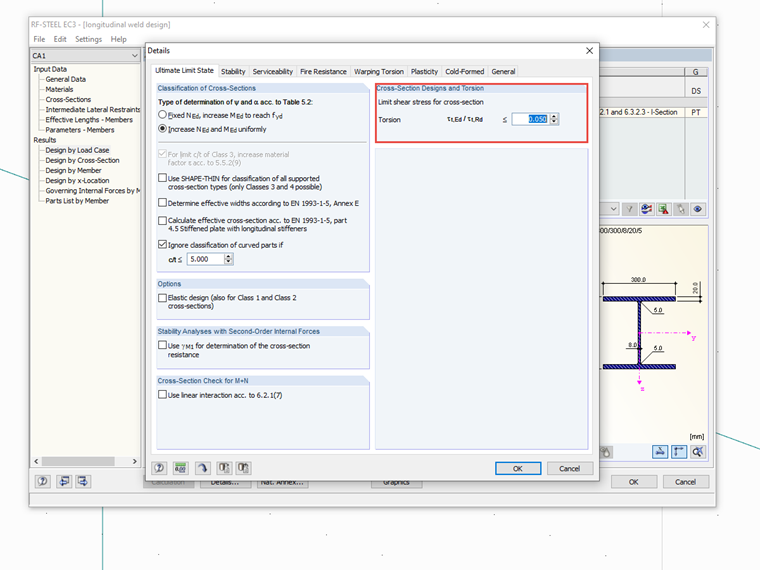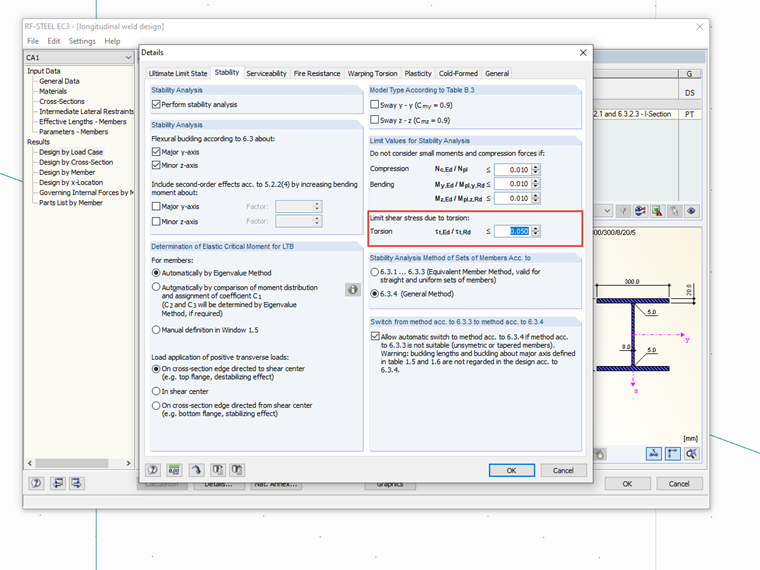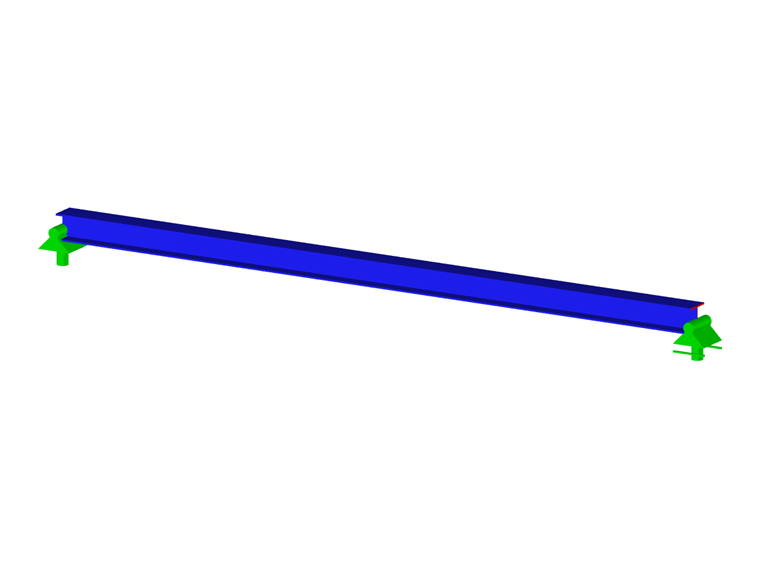Background of Limit Value Setting
When designing structures in the 3D model in particular, the result is often torsional moments in the members to be designed due to the modeling. However, the design rules in EN 1993‑1‑1 usually only contain valid interaction conditions and design methods for typical stresses from compression, bending, or shear force. For example, torsional moments cannot be considered in the classic methods for stability designs, such as the equivalent member method or the general method.
In order to still allow for a simple design and to neglect small torsional moments, the user can define a limit value for the shear stresses from torsion in the detail settings of RF‑/STEEL EC3. If the acting shear stresses are then lower than the defined limit value, they are neglected in the design. Thus, the stability analysis is still performed, or the more favorable interaction condition is still used.
Entering Limit Value in Detailed Settings
The limit value is entered separately for cross-section and stability design checks. There is no further warning that the torsional internal forces below this limit are neglected.
There is no normative basis for this limit value and therefore, no general specification. From an engineering point of view, however, we decided to use the default setting of a limit value of 5% in order to neglect small and mostly unintentional torsional moments in the design.
Primary torsion for open sections is negligible
In the case of open cross-sections, it can generally be assumed that acting torsional moments are not transferred by primary torsion, but by secondary (warping) torsion. In RFEM and RSTAB, the internal forces are initially only determined with six degrees of freedom without considering warping. For small acting torsional moments, it seems obvious to neglect the torsional stresses in the design. For large torsional moments, however, a calculation should be carried out with seven degrees of freedom in order to also consider the influence of the warping moment and the secondary torsional shear stresses. This is possible, for example, with the RF‑/STEEL Warping Torsion or RF‑/FE‑LTB add-on modules.



